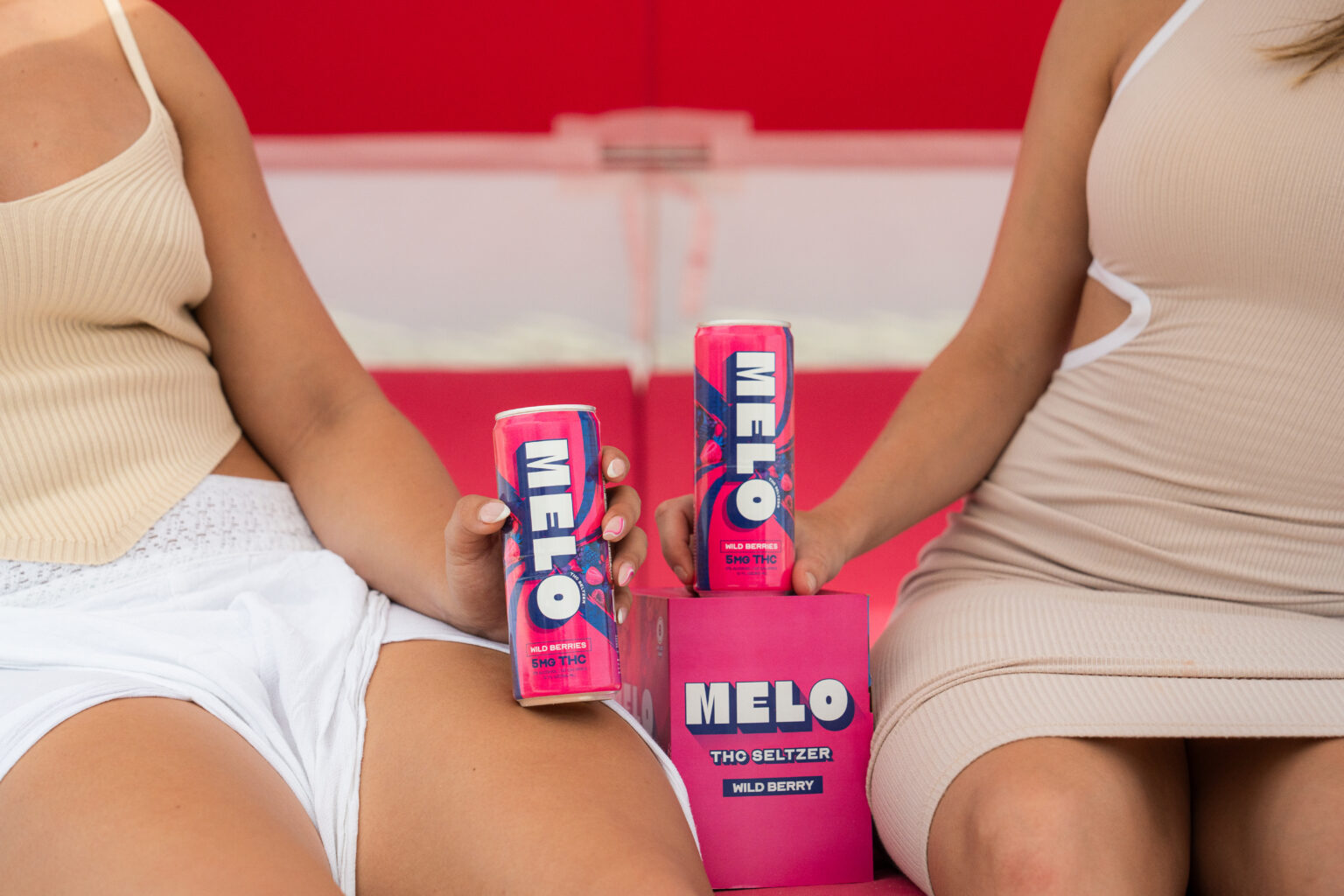THC Extraction
The journey from cannabis plant to your favorite THC-infused beverage begins with extracting the active compound, tetrahydrocannabinol (THC). This process isolates THC from the plant material, allowing it to be incorporated into various drinks.
Methods
Several methods are used to extract THC from cannabis plants, each with its own advantages and disadvantages. One common method is solvent extraction, which uses solvents like butane or ethanol to dissolve THC and other cannabinoids from the plant material. This process requires specialized equipment and careful handling due to the flammable nature of some solvents. Another popular method is CO2 extraction, which utilizes pressurized carbon dioxide to extract THC. CO2 is a non-toxic and environmentally friendly solvent, making this method increasingly favored by producers. Supercritical fluid extraction, a more sophisticated technique, involves heating and pressurizing CO2 to its supercritical state, enabling highly efficient and selective extraction of THC.
Safety and Purity
The journey from cannabis plant to your favorite THC-infused beverage begins with extracting the active compound, tetrahydrocannabinol (THC). This process isolates THC from the plant material, allowing it to be incorporated into various drinks.
Several methods are used to extract THC from cannabis plants, each with its own advantages and disadvantages. One common method is solvent extraction, which uses solvents like butane or ethanol to dissolve THC and other cannabinoids from the plant material. This process requires specialized equipment and careful handling due to the flammable nature of some solvents. Another popular method is CO2 extraction, which utilizes pressurized carbon dioxide to extract THC. CO2 is a non-toxic and environmentally friendly solvent, making this method increasingly favored by producers. Supercritical fluid extraction, a more sophisticated technique, involves heating and pressurizing CO2 to its supercritical state, enabling highly efficient and selective extraction of THC.
After extraction, the purity and safety of the resulting THC concentrate are paramount.
- Testing for contaminants such as residual solvents, heavy metals, pesticides, and microorganisms is essential to ensure consumer safety.
- Reputable manufacturers adhere to strict quality control standards and third-party lab testing to verify the purity and potency of their extracts.
- Consumers should look for products that have been tested by independent labs and display clear labeling with detailed information about the extraction method, cannabinoid content, and potential contaminants.
Infusion Process
The journey from cannabis plant to your favorite THC-infused beverage begins with extracting the active compound, tetrahydrocannabinol (THC). This process isolates THC from the plant material, allowing it to be incorporated into various drinks.

Types of Beverages
Several methods are used to extract THC from cannabis plants, each with its own advantages and disadvantages. One common method is solvent extraction, which uses solvents like butane or ethanol to dissolve THC and other cannabinoids from the plant material. This process requires specialized equipment and careful handling due to the flammable nature of some solvents. Another popular method is CO2 extraction, which utilizes pressurized carbon dioxide to extract THC. CO2 is a non-toxic and environmentally friendly solvent, making this method increasingly favored by producers. Supercritical fluid extraction, a more sophisticated technique, involves heating and pressurizing CO2 to its supercritical state, enabling highly efficient and selective extraction of THC.
After extraction, the purity and safety of the resulting THC concentrate are paramount. Testing for contaminants such as residual solvents, heavy metals, pesticides, and microorganisms is essential to ensure consumer safety. Reputable manufacturers adhere to strict quality control standards and third-party lab testing to verify the purity and potency of their extracts. Consumers should look for products that have been tested by independent labs and display clear labeling with detailed information about the extraction method, cannabinoid content, and potential contaminants.
Infused beverages can encompass a wide variety of drinks, each catering to different tastes and preferences. Popular choices include:

- THC-infused teas: Offering a calming and aromatic experience, often blended with herbs and spices.
- Seltzers and sparkling water: Providing a refreshing and lightly effervescent option infused with THC.
- Edible beverages like smoothies and juices: Delivering a flavorful and nutritious way to consume THC.
- Coffee and hot chocolate: Adding a touch of psychoactivity to your favorite warm beverages.
Extraction vs. Infusion Methods
After extraction, the concentrated THC is infused into beverages. There are two primary methods for achieving this: infusion and extraction. Infusion involves steeping the THC concentrate in a liquid base, such as water or juice, allowing the cannabinoids to dissolve and distribute evenly. Extraction, on the other hand, utilizes heat and pressure to directly dissolve THC into the drink.

Infusion is typically simpler and more cost-effective but may require longer processing times to ensure adequate flavor infusion. Extraction methods offer faster results and greater control over the final product’s potency and flavor profile.
Dosage Control
The journey from cannabis plant to your favorite THC-infused beverage begins with extracting the active compound, tetrahydrocannabinol (THC). This process isolates THC from the plant material, allowing it to be incorporated into various drinks.
Several methods are used to extract THC from cannabis plants, each with its own advantages and disadvantages. One common method is solvent extraction, which uses solvents like butane or ethanol to dissolve THC and other cannabinoids from the plant material. This process requires specialized equipment and careful handling due to the flammable nature of some solvents. Another popular method is CO2 extraction, which utilizes pressurized carbon dioxide to extract THC. CO2 is a non-toxic and environmentally friendly solvent, making this method increasingly favored by producers. Supercritical fluid extraction, a more sophisticated technique, involves heating and pressurizing CO2 to its supercritical state, enabling highly efficient and selective extraction of THC.
After extraction, the purity and safety of the resulting THC concentrate are paramount. Testing for contaminants such as residual solvents, heavy metals, pesticides, and microorganisms is essential to ensure consumer safety. Reputable manufacturers adhere to strict quality control standards and third-party lab testing to verify the purity and potency of their extracts. Consumers should look for products that have been tested by independent labs and display clear labeling with detailed information about the extraction method, cannabinoid content, and potential contaminants.
Infused beverages can encompass a wide variety of drinks, each catering to different tastes and preferences. Popular choices include:
- THC-infused teas: Offering a calming and aromatic experience, often blended with herbs and spices.
- Seltzers and sparkling water: Providing a refreshing and lightly effervescent option infused with THC.
- Edible beverages like smoothies and juices: Delivering a flavorful and nutritious way to consume THC.
- Coffee and hot chocolate: Adding a touch of psychoactivity to your favorite warm beverages.
After extraction, the concentrated THC is infused into beverages. There are two primary methods for achieving this: infusion and extraction. Infusion involves steeping the THC concentrate in a liquid base, such as water or juice, allowing the cannabinoids to dissolve and distribute evenly. Extraction, on the other hand, utilizes heat and pressure to directly dissolve THC into the drink.
Infusion is typically simpler and more cost-effective but may require longer processing times to ensure adequate flavor infusion. Extraction methods offer faster results and greater control over the final product’s potency and flavor profile.
Manufacturing Considerations
The production of THC-infused beverages requires careful consideration of several manufacturing factors to ensure a safe, consistent, and enjoyable product.
Regulations and Licensing
One crucial aspect is maintaining precise dosing accuracy. Incorporating consistent amounts of THC into each beverage is essential for predictable effects. This often involves using specialized equipment like volumetric dispensers or automated filling systems to ensure uniform distribution of the concentrate.
Packaging plays a vital role in preserving the quality and potency of THC-infused beverages. Light-resistant materials are essential to prevent degradation of cannabinoids, while airtight containers help maintain freshness and prevent oxidation. Proper labeling is critical for consumer safety, providing information about dosage, ingredients, and potential allergens.
Storage and transportation require careful consideration to maintain product integrity. THC-infused beverages should be stored in a cool, dark place away from direct sunlight and heat sources. Temperature fluctuations can affect potency and flavor. Secure and temperature-controlled shipping methods are essential to prevent degradation during transit.
Quality Control
Manufacturing Considerations
The production of THC-infused beverages requires careful consideration of several manufacturing factors to ensure a safe, consistent, and enjoyable product. One crucial aspect is maintaining precise dosing accuracy. Incorporating consistent amounts of THC into each beverage is essential for predictable effects. This often involves using specialized equipment like volumetric dispensers or automated filling systems to ensure uniform distribution of the concentrate.
Packaging plays a vital role in preserving the quality and potency of THC-infused beverages. Light-resistant materials are essential to prevent degradation of cannabinoids, while airtight containers help maintain freshness and prevent oxidation. Proper labeling is critical for consumer safety, providing information about dosage, ingredients, and potential allergens.
Storage and transportation require careful consideration to maintain product integrity. THC-infused beverages should be stored in a cool, dark place away from direct sunlight and heat sources. Temperature fluctuations can affect potency and flavor. Secure and temperature-controlled shipping methods are essential to prevent degradation during transit.
Quality Control
Ensuring the safety and quality of THC-infused beverages is paramount. Reputable manufacturers implement rigorous quality control measures throughout the entire production process.
Storage and Shelf Life
Storage and Shelf Life
Proper storage is crucial for preserving the quality, potency, and safety of THC-infused beverages.
- Store in a cool, dark place: Avoid exposure to direct sunlight, heat, or moisture, as these factors can degrade cannabinoids and alter flavor.
- Keep refrigerated: Refrigeration can extend shelf life and maintain freshness, especially for beverages with perishable ingredients.
- Use airtight containers: Prevent oxidation and preserve potency by storing THC-infused drinks in tightly sealed containers.
Shelf life varies depending on factors such as storage conditions, ingredients, and the extraction method used. Generally, expect THC-infused beverages to have a shelf life of several months when stored properly.
Shop infused cannabis drinks with THC
- How To Tell If Jaw Fillers Are Right For You - September 15, 2025
- Bum Filler Injections In Cranleigh Surrey - September 14, 2025
- How To Safely Mix Kratom Capsules With Other Supplements For Better Results - September 13, 2025
